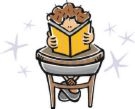I happen to have a lot of nieces and nephews on my husband's side. Since I'm fairly sure these kids have no shortage of toys, and I love excuses to read children's books, I decided early on that I would stick with giving them books as gifts. I dread the day that the youngest outgrows picture books, because they're the most fun to buy, but fortunately some picture books are sophisticated enough that you can go right on buying them up through age eight or even higher. Picture book biographies are especially good for this, because the "story" and vocabularies are often more involved, plus the child has the opportunity to pursue the subject further if they're interested. And even if they don't pursue it right away, maybe someday they'll remember/realize that that book they read as a kid was actually about a real person.
Another picture book biography that I only just came across is the wonderful Brothers at Bat, written by Audrey Vernick and illustrated by Steven Salerno, about an all-brother baseball team that competed for years, interrupted only by World War II. The Acerra family had sixteen kids, twelve of them boys, which was more than enough to field their own team. The book relates their story in a conversational style, all the way up through their last game as a team in 1952 and their honoring in 1997 by the Baseball Hall of Fame. What's really interesting to me is that the Acerras were one of twenty-nine baseball teams made up entirely of brothers that played between the 1860s and 1940s. This brought home two things to me: first, that people sure did have a lot of kids back then, and second, that baseball really is the American game. (It's also more "mystical" than other sports, which to me is why baseball movies often introduce a hint of magic, whereas football and ice hockey movies are almost always about sheer force of will.) But back to this book: the illustrations have lovely attention to detail, so it's worth looking at them closely.
Yet another children's book that taught me something I didn't know: Tallchief: America's Prima Ballerina. This one is actually a picture book autobiography, written by Maria Tallchief herself with assistance from Rosemary Wells, and illustrated by Gary Kelley. Ms. Tallchief was considered the first prima ballerina, and the first Native American to achieve international ballet stardom; in fact, she was the first star of George Balanchine's New York City Ballet company. Since I didn't come to appreciate ballet until my late thirties, I know little about the history of the art form, so I was glad to find out about this influential dancer.








No comments:
Post a Comment